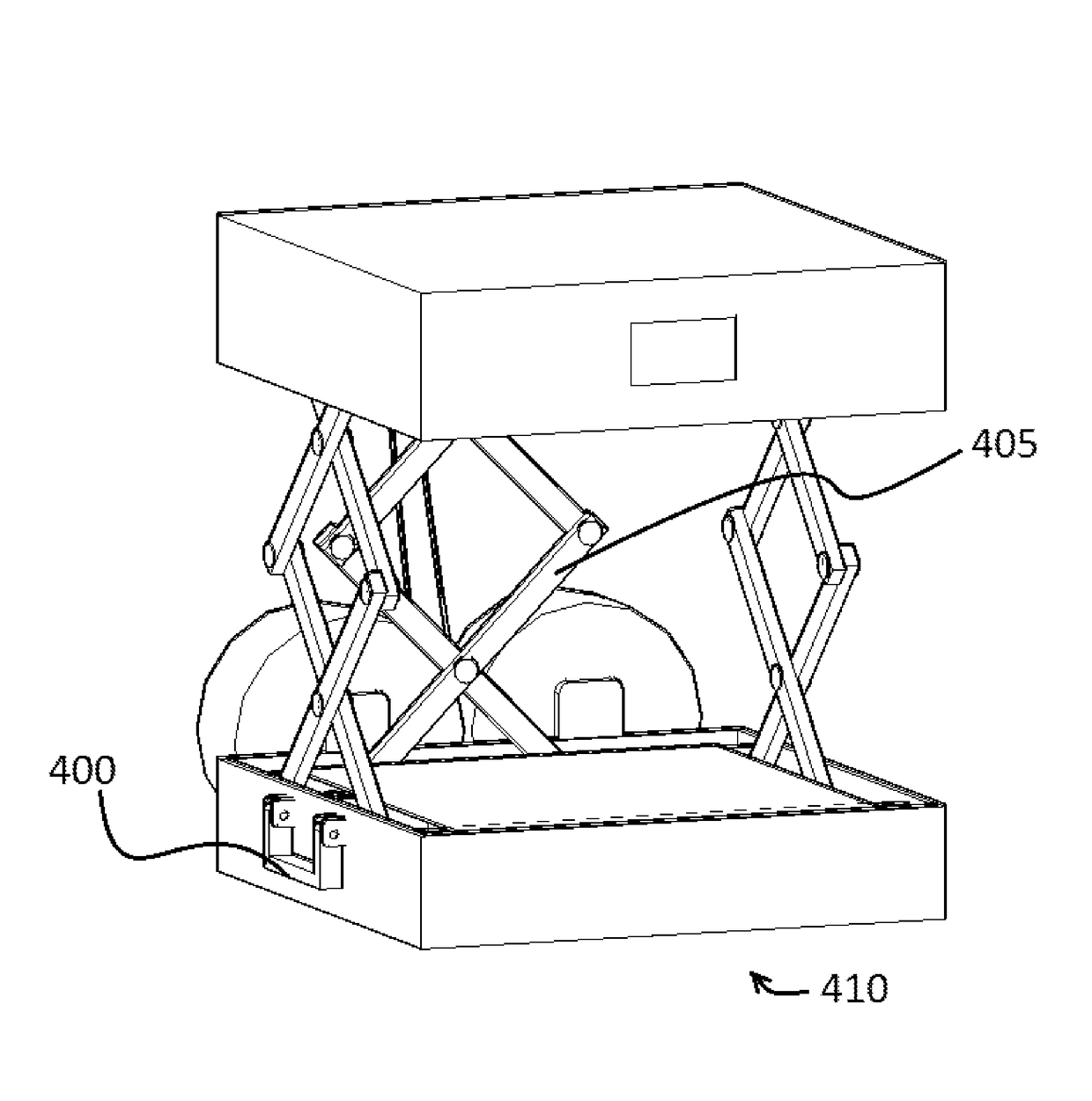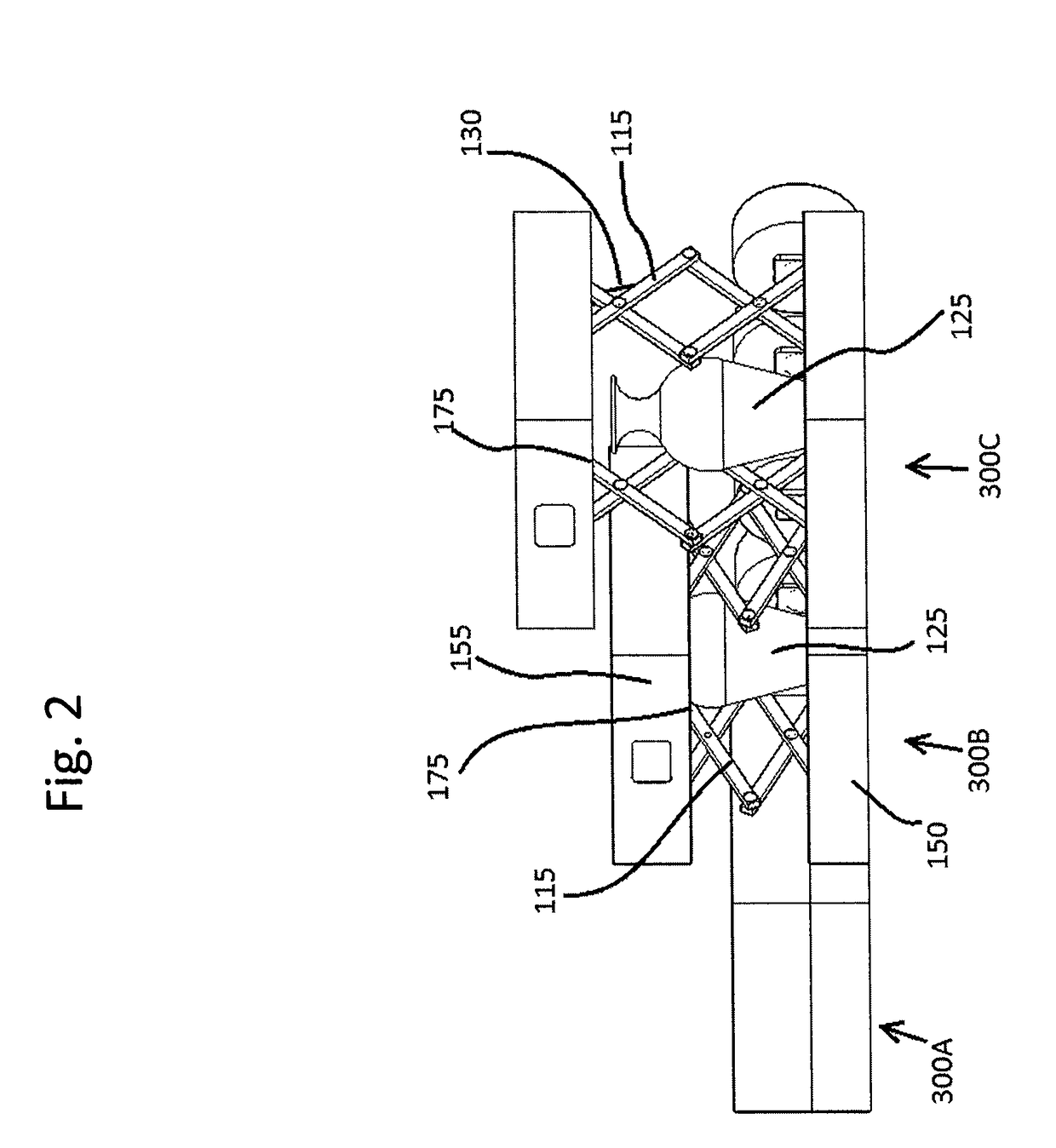3-D printer
a printing device and three-dimensional technology, applied in the direction of manufacturing driving means, manufacturing tools, application layer means, etc., can solve the problems of limited mobility, large size and weight, and difficulty in adjusting and maintaining the levelness of the extrusion assembly plan
- Summary
- Abstract
- Description
- Claims
- Application Information
AI Technical Summary
Benefits of technology
Problems solved by technology
Method used
Image
Examples
Embodiment Construction
[0018]FIG. 1 shows an embodiment of a collapsible 3D printer 100. The system includes a base housing 150 containing various mechanical, electrical, and electronic components that operate the printer 100. An upper housing 155 is positioned above and parallel to the base housing 150 and houses the extruder assembly (not shown) as well as mechanical and electronic components that operate the printer 100. The upper housing 155 and the lower housing 150 are connected by collapsible scissor linkages 115 that allow the printer 100 to collapse and expand in the vertical direction while remaining parallel to each other. The build material 130 may be kept on spool brackets 170 and fed into the upper housing 155 and through the extruder system. The extruder system is movable along 2 perpendicular horizontal axes and deposits the material 130 onto the build platform 110. The material 130 is deposited onto the build platform 110 as the linkage 115 moves the upper housing 155 in the vertical dire...
PUM
| Property | Measurement | Unit |
|---|---|---|
| angle | aaaaa | aaaaa |
| height | aaaaa | aaaaa |
| distance | aaaaa | aaaaa |
Abstract
Description
Claims
Application Information
 Login to View More
Login to View More - R&D
- Intellectual Property
- Life Sciences
- Materials
- Tech Scout
- Unparalleled Data Quality
- Higher Quality Content
- 60% Fewer Hallucinations
Browse by: Latest US Patents, China's latest patents, Technical Efficacy Thesaurus, Application Domain, Technology Topic, Popular Technical Reports.
© 2025 PatSnap. All rights reserved.Legal|Privacy policy|Modern Slavery Act Transparency Statement|Sitemap|About US| Contact US: help@patsnap.com



